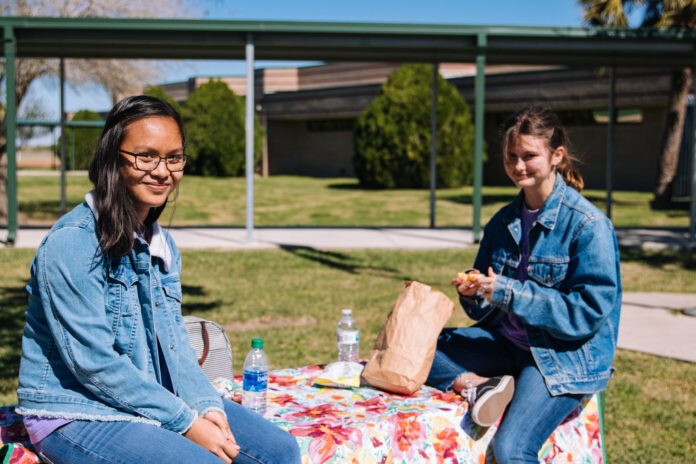By Sean Slade
Schools must be healthy and safe places for all—students, teachers, communities—before they can effectively focus on teaching and learning. This should be a fundamental assumption, and expectation, of anyone involved with or in education. Schools must ensure that appropriate and effective physical health and safety measures are both in place and in practice, and after this they must then ensure that social, emotional, and mental health and well-being are addressed.
The Covid-19 global pandemic has powerfully underscored these points. School closures and a shift to online learning do not eliminate or rectify these needs or concerns; if anything, they make them more urgent. Many underserved communities and populations are suffering, whether they are going to school in person or remotely, and for many, school consistently provides the best avenue to meals, health, and counseling services. Schools and school systems have to balance all these necessities in their back-to-school decisions and figure how to deliver them regardless of what mode of education is provided.
Even students who have support systems, structures, and consistent Wi-Fi are struggling with the piecemeal offerings being delivered remotely. Remote learning makes socializing and belonging—key parts of effective learning—extremely difficult. We will learn to do it better, but currently, remote learning is struggling to bridge the connectedness gap.
Merely forging forward on reopening schools during a pandemic cannot and will not rectify these issues. Other countries that have reopened somewhat successfully, including Germany, Denmark, Norway, and Australia, have all had far less infection than the United States and have also implemented stringent testing, social distancing, and contact tracing procedures. These have not been mere recommendations or guidelines, but policies implemented and enforced.
We are in the middle of a viral pandemic, and at the same time, we are in the middle of a learning pandemic. It is time for us to seriously readjust how our services and systems support the learners, their schools, and their communities. It is time to truly put the child at the center and array our resources around that child.
If decisions about education policy and practice started by asking what works for the child, how would resources—time, space, and human—be arrayed to ensure each child’s success? If the student were truly at the center of the system, what could we achieve?
We are not starting the work of alignment or coordination from scratch because much has been done already to better align health with education. Through their school health divisions, the U.S. Centers for Disease Control and Prevention (CDC) have been advocating for a more unified and collaborative approach to healthy and safe learning environments since 1987, as well as the launch of the traditional Coordinated School Health (CSH) model. The CSH model provided a succinct and distinct framework for organizing a comprehensive approach to school health. However, though the model has widespread health sector support, it was viewed by educators as primarily a health initiative focused only on health outcomes and consequently gained limited traction across the education sector at the school level.
In 2014, ASCD, long the leading advocate for a whole child approach to education, joined the CDC in developing and launching the next evolution for coordinated school health. The Whole School, Whole Community, Whole Child Model (WSCC) combines and builds on elements of the traditional coordinated school health approach and the ASCD Whole Child framework. ASCD and the CDC developed this new model—in collaboration with key leaders from the fields of health, public health, education, and school health—to strengthen a unified and collaborative approach to learning and health. The model responds to the call for greater alignment, integration, and collaboration between education and health in order to improve each child’s cognitive, physical, social, and emotional development. It incorporates the components of a coordinated school health program with the tenets of a whole child approach to education and provides a framework to address the symbiotic relationship between learning and health.
It is time to truly align the sectors and place the child at the center. Both public health and education serve the same students, often in the same settings. We must do more to work together and collaborate.
The Whole School, Whole Community, Whole Child model developed by ASCD and the CDC takes the call for greater collaboration over the years and puts it firmly in place. For too long, entities have talked about collaboration without taking the necessary steps. This model puts the process into action.
The model launched six years ago is now commonplace across the majority of school health, public health, and education organizations nationally. It sets out the framework for states, districts, and schools to bring together key entities to discuss, plan, and implement a healthy and safe approach to education. Effective guides to implementation have been developed and are currently in process across the states, frequently backed by CDC school health funding, but more often being initiated by state departments of education.
In the midst of this Covid-19 crisis, the WSCC model provides a conceptual view and necessary practical framework to achieve greater alignment, integration, and collaboration between health and education to improve each child’s cognitive, physical, social, and emotional development.
The good news is that these systems are in place or forming in states.
The good news is that health and community services have always seen their role in supporting children and youth in schools.
The good news is that a whole child focus has always understood the symbiotic relationship between learning and health.
The good news is that we have a framework in place, with processes and exemplars occurring around the country.
The good news is that there is now widespread appreciation of the need to have health, education, and the community work better together.
Along with the WSCC model, ASCD has worked to facilitate these community relationships. The Global School Health Statement, however, elevated this key dynamic even further by calling for four actions to truly embed health into—not alongside—education processes.
- The health sector needs to seek integration within the education system—not education’s adoption of health priorities. The health sector must find its cultural anchor within education and integrate its processes and outcomes.
- Health system officials, decision makers, and researchers should examine and better understand (via dialogue led or facilitated by educators) the core mandates, constraints, attributes, processes, and characteristics of education systems in order to better integrate within them.
- Health and social sectors must join the education sector in focusing on the growth and development of the whole child, rather than directing attention and resources only toward specific diseases, behaviors, or conditions as separate or siloed entities. Disease intervention must occur as required but needs to be housed in an overall health and development, or salutogenic, framework, refocusing attention on a settings-based approach.
- This realignment of health and other sector efforts should be done through a systems-based, organizational development approach focused on capacity building and continuous improvement.
The worldwide Covid-19 pandemic has taken a toll on communities around the globe. It has also forced considerations to be debated and profound decisions to be made about school operations. While the news has been grim, we will—eventually—control this viral pandemic. Until then, let’s use this time to recreate the relationship between health and education. Let’s use this time to reestablish the communities’ role into and across child and youth development. Let’s also use this time to understand what has been developed—and can be expanded and enhanced—in order to ensure that our schools reopen with health and safety in mind.
Sean Slade is an education leader, speaker, and author, with nearly three decades of experience in education in the U.S. and globally. He serves as Head of BTS Spark, North America, the social impact arm of BTS focusing on educational leadership development. Prior to BTS Spark, Sean was senior director of global outreach at ASCD, where he launched and grew the ASCD Whole Child Network across 56 countries and led the development of the Whole School, Whole Community, Whole Child Model (WSCC) with the CDC. His latest book is The Power of the Whole: What is Lost by Focusing on Individual Things.








